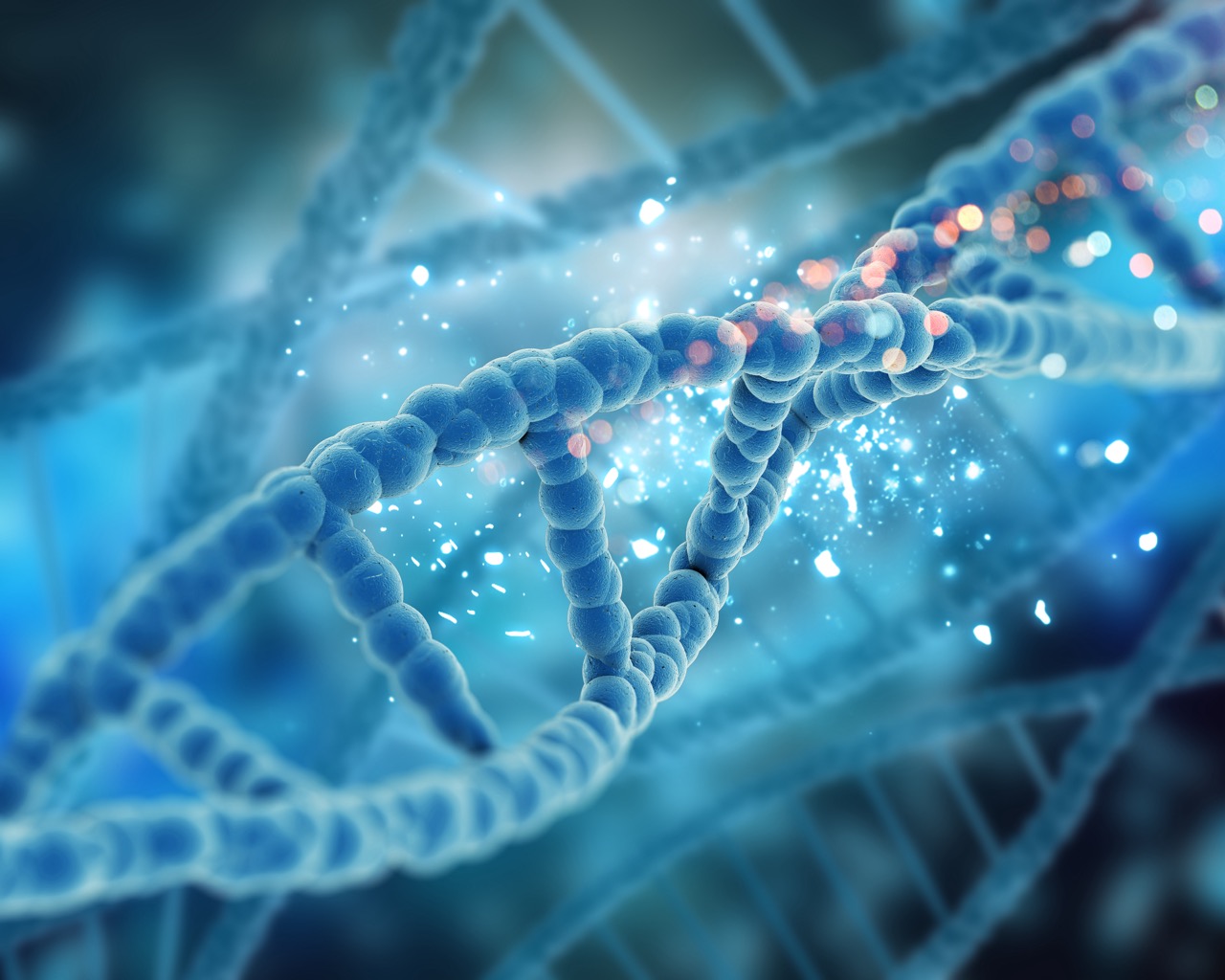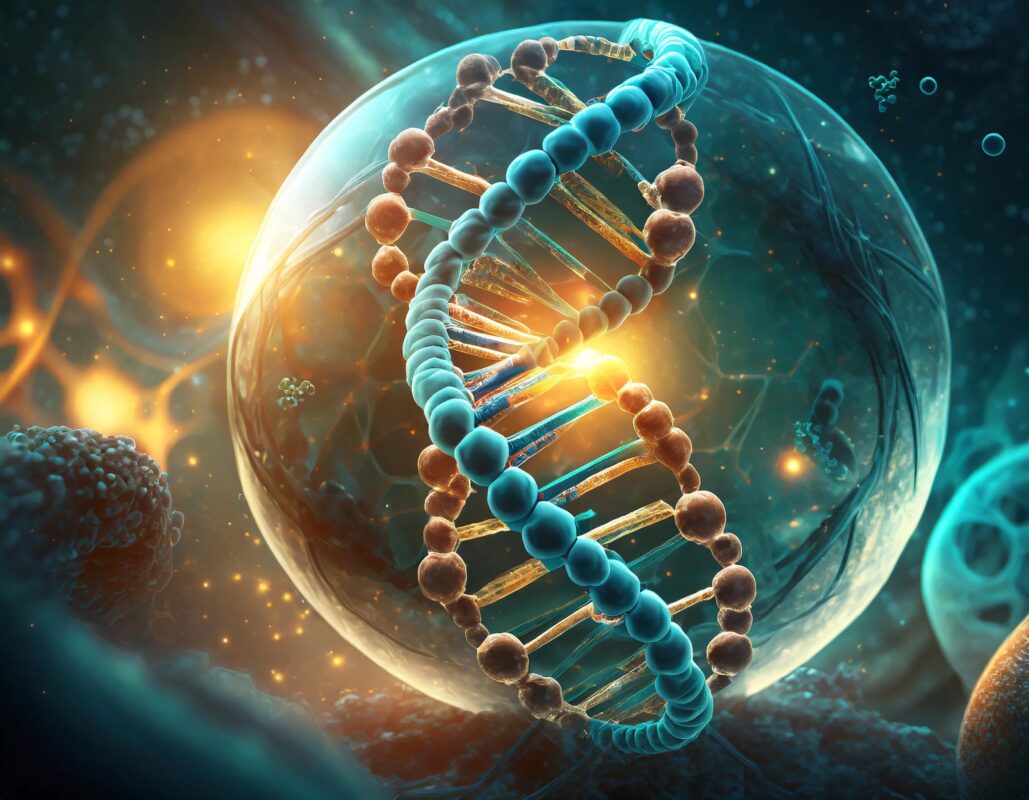The discovery of ribozymes in the 1980s revealed that RNA can not only store information, but also catalyse chemical reactions like enzymes do. This finding not only changed our understanding of cell biology, but also opened the door to new RNA-based therapies.
What are ribozymes?
Ribozymes, or ribozymes (a chimera word derived from ‘ribonucleic acid’ and ‘enzyme’), are RNA molecules with catalytic activity, i.e. they can accelerate chemical reactions in a specific way, just like enzymes of a protein nature. This catalytic capacity makes them unique and versatile molecules in the world of nucleic acids. Unlike messenger RNA, which carries genetic information, ribozymes have the ability to manipulate other nucleic acids, cleaving, binding or modifying their own structures. In the 1980s, scientists Sidney Altman and Thomas Cech conducted pioneering research that revealed that RNA could act as a catalyst. Altman studied ribonuclease P RNA in bacteria, while Cech investigated the process of self-splicing in a protozoan called Tetrahymena. Both found that RNA was able to carry out these reactions without the help of proteins. For their research, Altman and Cech won the Nobel Prize in Chemistry in 1989, and their discoveries transformed the understanding of molecular biology.

Types of ribozymes and their mechanisms of action
Ribozymes have different structures and mechanisms that determine their catalytic function. The best known include:
- Ribonuclease P: involved in the processing of transfer RNA (tRNA), cleaving specific fragments to produce functional molecules.
- Self-splicing ribozymes: Like the one found in Tetrahymena, these allow certain RNAs to modify their own structure by removing or ‘cutting’ certain sequences.
- Hepatitis Delta Ribozyme: A structure of hepatitis delta virus RNA that is self-splicing to facilitate viral replication.
Each ribozyme uses unique mechanisms, such as the formation of loop structures or the positioning of specific nucleotides that facilitate the reaction. These properties make them ideal for therapeutic applications.
Therapeutic applications of ribozymes
The ability of ribozymes to recognise and modify RNAs makes them promising tools for treating disease. The main areas of research include:
Genetherapy
Ribozymes can be engineered to target specific target specific messenger RNA (mRNA) sequences, which allows them to “silence” or destroy abnormal RNAs that might that could give rise to defective proteins. This has applications for treating genetic diseases or cancer, where control over gene expression is crucial.
Treatment of viral infections
Ribozymes can attack the RNA of certain viruses , degrading them before they can replicate. RNA of certain viruses by degrading them before they can replicate. This approach has been studied in diseases such as HIV and hepatitis , where ribozyme-based therapies could reduce viral load. where ribozyme-based therapies could reduce viral load.
RNAediting and repair
Researchers are exploring the use of ribozymes to correct specific errors in RNA associated with genetic mutations. By repairing defective RNA, these treatments could restore cell function without altering the cell ‘ s DNA.
Nanoparticle assembly and delivery
Thanks to their ability to form complex structures, ribozymes are also being investigated in the field of nanotechnology. They could be used to create drug delivery vehicles that, in addition to transporting compounds, have the ability to control or catalyse reactions directly in the body.
Challenges of ribozymes in therapeutics
Although promising, there are some challenges in the therapeutic use of ribozymes. One of the main ones is the stability of RNA, which is more susceptible to degradation than DNA or proteins. For ribozymes to be effective in the human body, they must be stabilised or protected by advanced techniques. In addition, methods to safely target ribozymes to specific tissues or cells are still being developed. Despite these challenges, ribozyme research has shown encouraging results in clinical trials and animal models. With the advancement of biotechnology, we are likely to see increasingly stable, effective and applicable ribozymes in therapies.
Ribozymes against rare diseases
Ribozymes have enormous potential in the treatment of diseases, many of which are caused by specific genetic mutations that lead to the production of defective or toxic proteins. Because ribozymes can be designed to recognise and degrade specific mRNAs, it is possible to use them to silence mutated genes or correct errors in RNA before it is translated into proteins. This precision makes them valuable tools for diseases where traditional gene therapy is difficult to apply. Furthermore, by targeting RNA without modifying the underlying DNA, ribozymes offer a safe and reversible approach, which is ideal for addressing rare genetic conditions with less risk of long-term adverse effects. In summary, ribozymes represent one of the most important discoveries in modern biology. As new applications are discovered and their properties improve, ribozymes may play a key role in the treatment of hitherto incurable diseases.
Sources:
Thomas R. Cech – Article – NobelPrize.org
Ribozymes: structure, function, and potential therapy for dominant genetic disorders – PubMed.
The Therapeutic Potential of Ribozymes | Blood | American Society of Hematology
Ribozymes: recent advances in the development of RNA tools – ScienceDirect
Images:

 Español
Español
